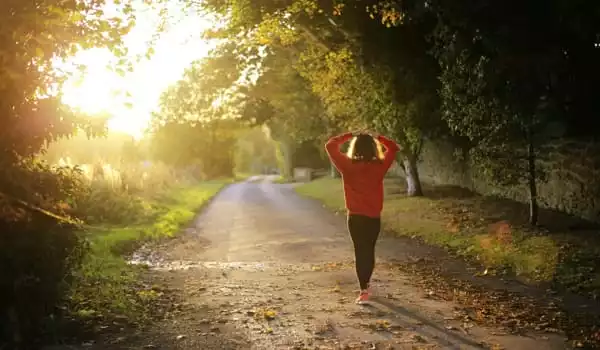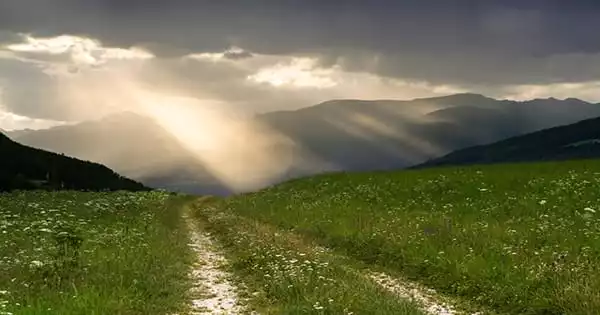According to this research, persons who spent more time in green spaces experienced less anxiety and depression during the first year of the pandemic. Simply having a lot of green space around, as evaluated by satellite pictures, was linked to decreased depression levels.
According to recent University of Colorado Boulder research published in the journal PLOS One, people exposed to greater green space during the first year of the COVID-19 pandemic reported much less melancholy and anxiety.
The study also discovered that, at a time when mental health issues were on the rise due to financial difficulties, supply shortages, and incessant news coverage of the virus, individuals sought consolation in nature, with one-third spending more time there than they did before COVID.
“This study demonstrates how important it is to maintain parks and green spaces open during times of crisis,” said senior author Colleen Reid, an assistant professor of geography at the Institute for Behavioral Science. “It also demonstrates that, as a public health strategy, more effort should be taken to create and make accessible green places.”
The authors administered a 30-minute survey to approximately 1,200 Denver-area people to assess their mental health and perceptions of green space near their homes, including how much there was, whether they could see it, if it was accessible, how much they used it, and its quality. They also gathered aerial satellite photos in order to objectively evaluate the amount of vegetation in respondents’ neighborhoods. The survey was conducted between November 2019 and January 2021.
This study demonstrates how important it is to maintain parks and green spaces open during times of crisis. It also demonstrates that, as a public health strategy, more effort should be taken to create and make accessible green places.
Colleen Reid
Reid added additional questions once COVID-19 appeared and lockdowns ensued, allowing a rare opportunity to additionally look at how the pandemic affects mental health over time and what was most worrisome about it.
“Not surprisingly, we discovered that the pandemic had a poor influence on mental health,” said co-author Emma Rieves, a master’s student at the Department of Geography. “However, we discovered that green space can have a substantial protective effect, even in the face of such enormous stressors.”
Supply shortages and job losses stressed people out
Surprisingly, the study showed no link between having COVID and having poor mental health. Respondents, on the other hand, reported that having symptoms, no diagnosis, and no way to test was worrisome. Those who lost their jobs or thought they were working in a dangerous environment were more likely to be worried or depressed, while a worry of supply shortages was the most common cause of mental health problems (including toilet paper and food).
People who spent a lot of time scanning the internet and reading the news had worse mental health. In contrast, having plenty of green space nearby, as judged by satellite pictures, was linked to lower depression levels. The study discovered that in order to reap the greatest benefits from adjacent green space, people needed to get out and use it. Those who spent the most time in green spaces had much lower levels of anxiety and despair.

“There are many dimensions of green space, and our study looked closely at how these dimensions impact mental health,” Rieves explained, noting that policymakers frequently rely solely on objective measures, such as satellite images or proximity to parks, when deciding whether to invest in more greenery in a community.
According to Rieves, a huge patch of greenery on a satellite image could actually be a weed-infested property. A ‘nearby park’ may be located on the other side of a major motorway. “It’s more than just being able to view trees from your house. The quantity, quality, and accessibility of that green space are all important considerations “Rieves stated.
At the start of the epidemic, many government agencies shuttered public green spaces, including local playgrounds and national parks, out of concern that the virus could be easily spread through surfaces. Coloradans flocked to the outdoors once parks reopened, despite the fact that venues like gyms, pubs, and churches remained closed: 33% of respondents reported spending more time in parks or on trails than the previous year.
The ‘biophilia hypothesis’
The findings add to a growing body of evidence that suggests green space might have a quantifiable influence on health. According to one theory, known as the ‘biophilia hypothesis,’ humans have an inbuilt desire to interact with green areas, where the relaxing atmosphere regulates stress hormones in a way that promotes healing and protects against disease.
“The notion is that we have evolved with nature, and that we have only recently been living in the concrete jungle,” Reid explained. One well-known 1984 study discovered that when hospital patients had rooms with windows overlooking green space, their wounds healed faster and they required less pain medication than those with windows overlooking a brick wall.
Reid noted that links between green space and health have been studied, in part because people with higher wages and, consequently, better access to nutritious food and health care may also be able to afford to live near green spaces.
Reid’s study addressed this by taking sociodemographic characteristics into consideration, as well as the many unique circumstances that have occurred during COVID. Even after adjusting for all other variables, the benefits remained clear: “Spend more time outside,” Rieves said. “Whether there’s a pandemic or not, it’s beneficial for your mental health.”















